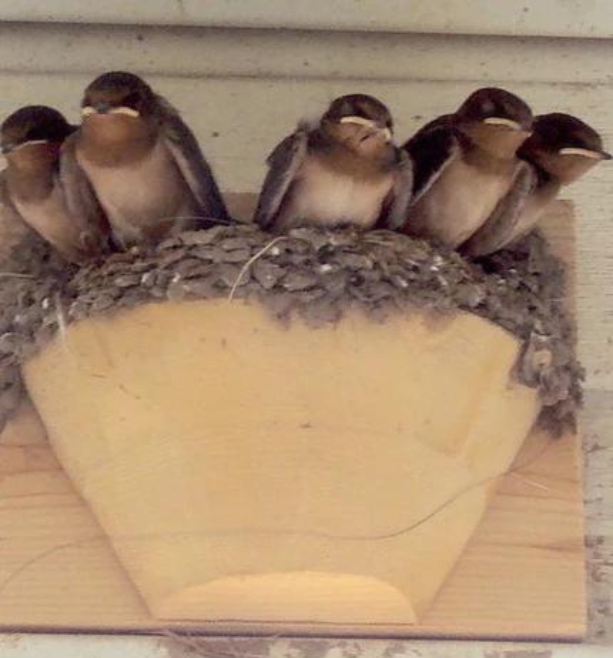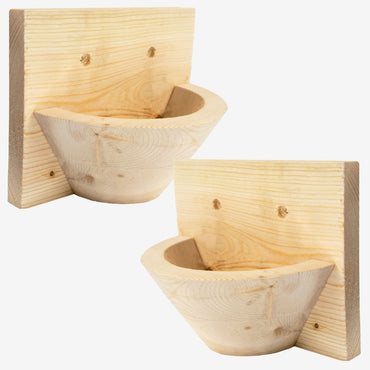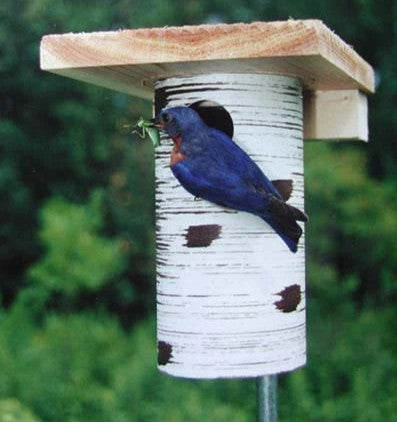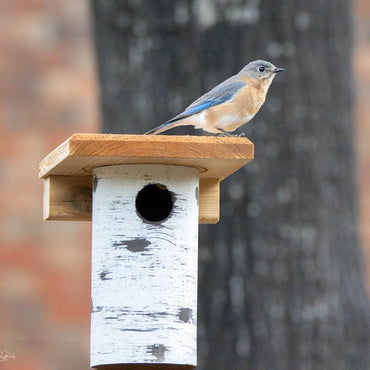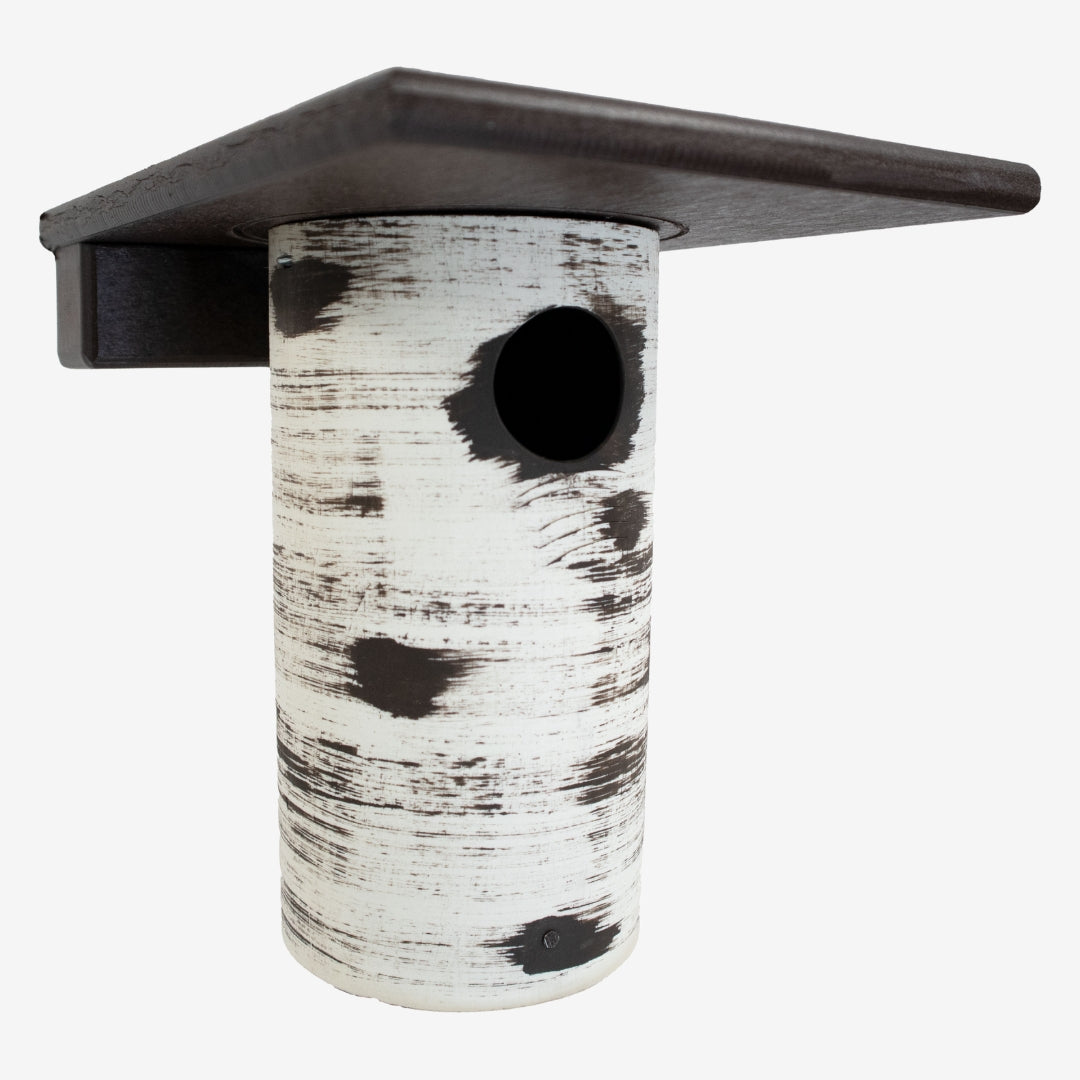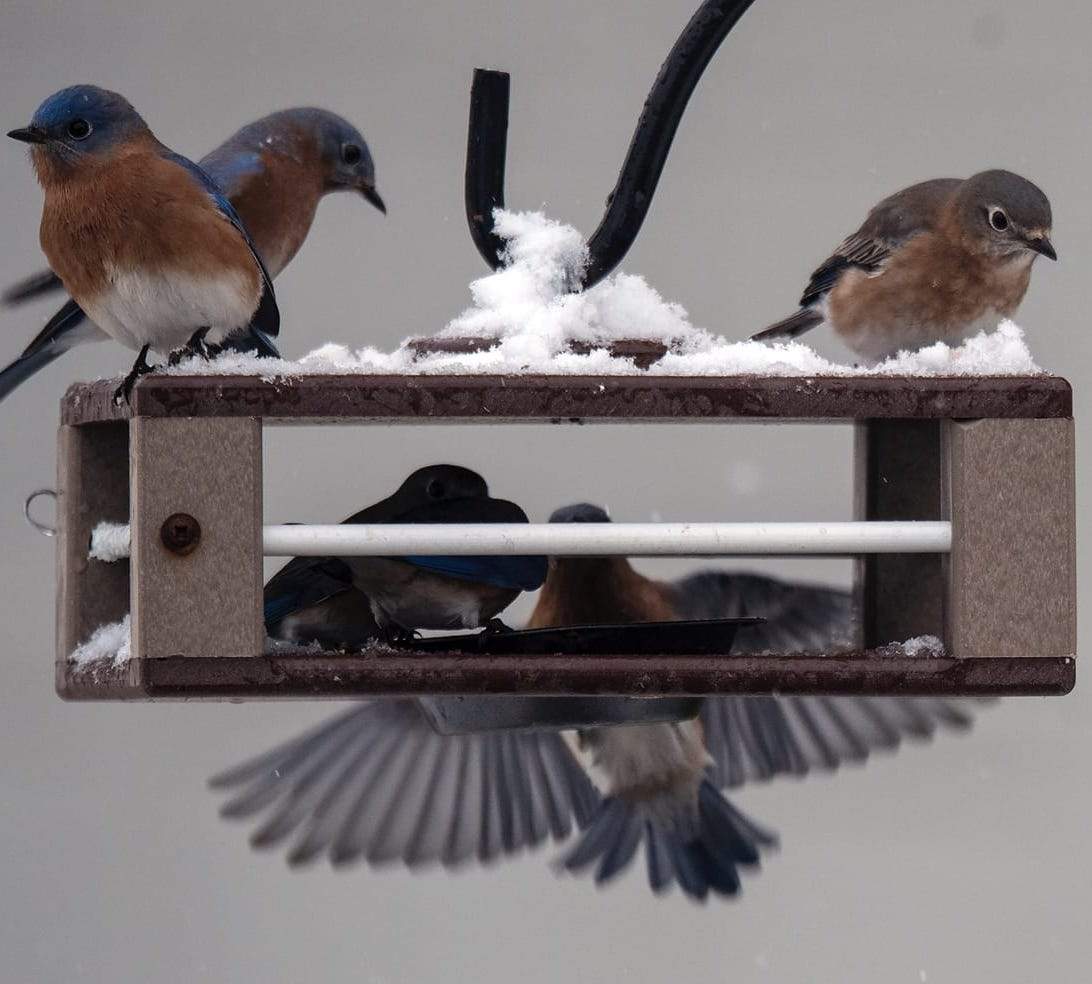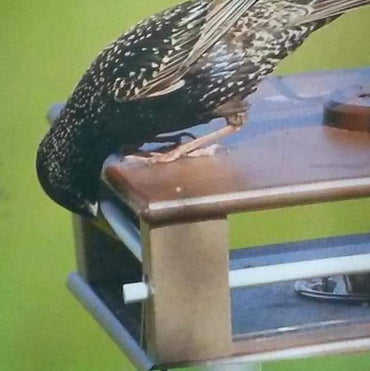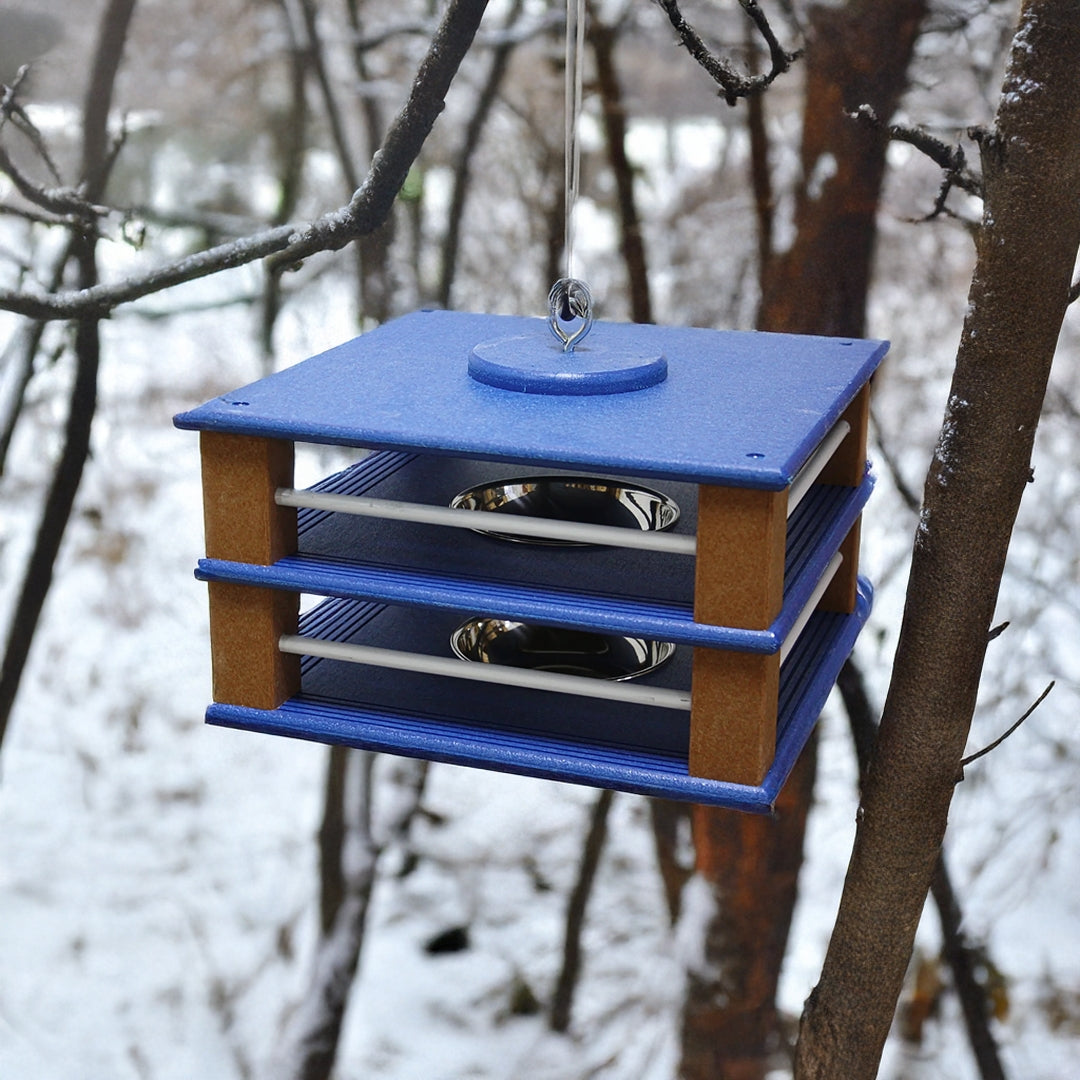Although resident birds may be roosting in your birdhouses on chilly winter nights, the first blooms of spring are a sure sign the nesting season is underway. Regardless of location... those first buds kick it into gear, especially for bluebirds!
 The First Scouts
The First Scouts
The first scouts are usually dominant, more mature males. They're the most active and animated birds, chasing offspring and other male competitors from feeders and bluebird houses. Chattering is loud and often as they voice concerns over territorial claims.
This is exactly why bluebird houses should not be placed in close proximity to each other. As a general rule, one house in front and one in back of your home is acceptable. On a trail or along a fence post, 100 to 300 feet apart is usually tolerated.
The funny little wing-tip signals he's found prime digs in just the right spot and he's calling for his counterpart to come check it out for ultimate approval and final decision. Smart birds - as it's the female who gets final say!
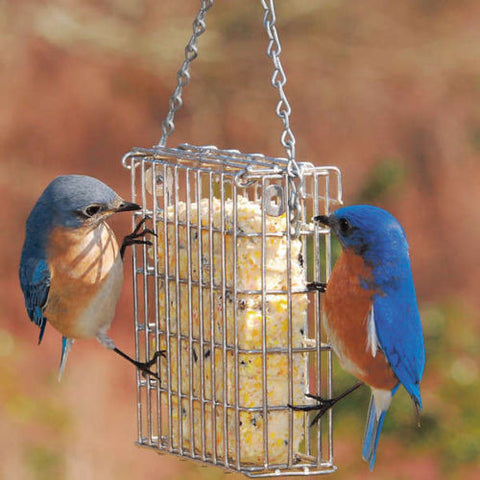 Breeding Season
Breeding Season
Males and females are pairing off now, they'll stay together for the breeding season (typically 2 to 3 clutches) and beyond. Some blues even stay together for life... provided Mother Nature allows.
Because natural predators abound and human interference can be fatal via pesticide poisoning or roaming house cats... nothing is ever guaranteed.
It's a good idea to place a squirrel baffle on a pole containing a house with eggs or nestlings.
Availability of natural food sources also plays a role in their survival, especially since they start breeding so early on the season.
With insects and berries scarce, late winter storms have been known to wipe out areas of bluebirds who succumb to hypothermia (reported in the past by dedicated bluebird monitors).
Now is the Time for a New House
The pair actually claims the birdhouse by placing some nesting material inside, known as claim straws. Eastern bluebirds use mostly pine straw for nest construction, but dried grasses may also be found in their nests.
Once the house is claimed both mom and dad will fiercely defend their new home. Both will assist with nest building, both will help raise nestlings, be it feeding or keeping a watchful eye while one parent leaves to seek food.
 Nest removal by human host (you) is required once all babies have fledged. This opens up space again for a clean, new nest and another brood. Did we mention how smart these birds are?
Nest removal by human host (you) is required once all babies have fledged. This opens up space again for a clean, new nest and another brood. Did we mention how smart these birds are?
So once buds start springing forth, get your fanny into action and check birdhouses for old nests (discard in the trash) and make repairs if necessary.
Predator guards are handy if Mr. Squirrel or a woodpecker has chewed the entry to gain access.
Should you be interested in attracting and housing bluebirds, now is the time for a new house!
One with side door or the ability to monitor the nesting process is recommended. Fresh water in a bird bath is highly enticing (for other songbirds too).
And bluebirds' very favorite... is mealworms! Worms may be fed in a traditional bluebird feeder with fly-in style, or any simple dish feeder.
Feed birds at the same time everyday, with a special whistle or call and you'll have blues trained in no time!
For more in-depth bluebird information (or any native cavity-nesting birds) check out the website sialis.org. It features well formatted, easy to understand tips and topics on all things bluebird-related.
Come on spring & happy birding!


 The First Scouts
The First Scouts Breeding Season
Breeding Season